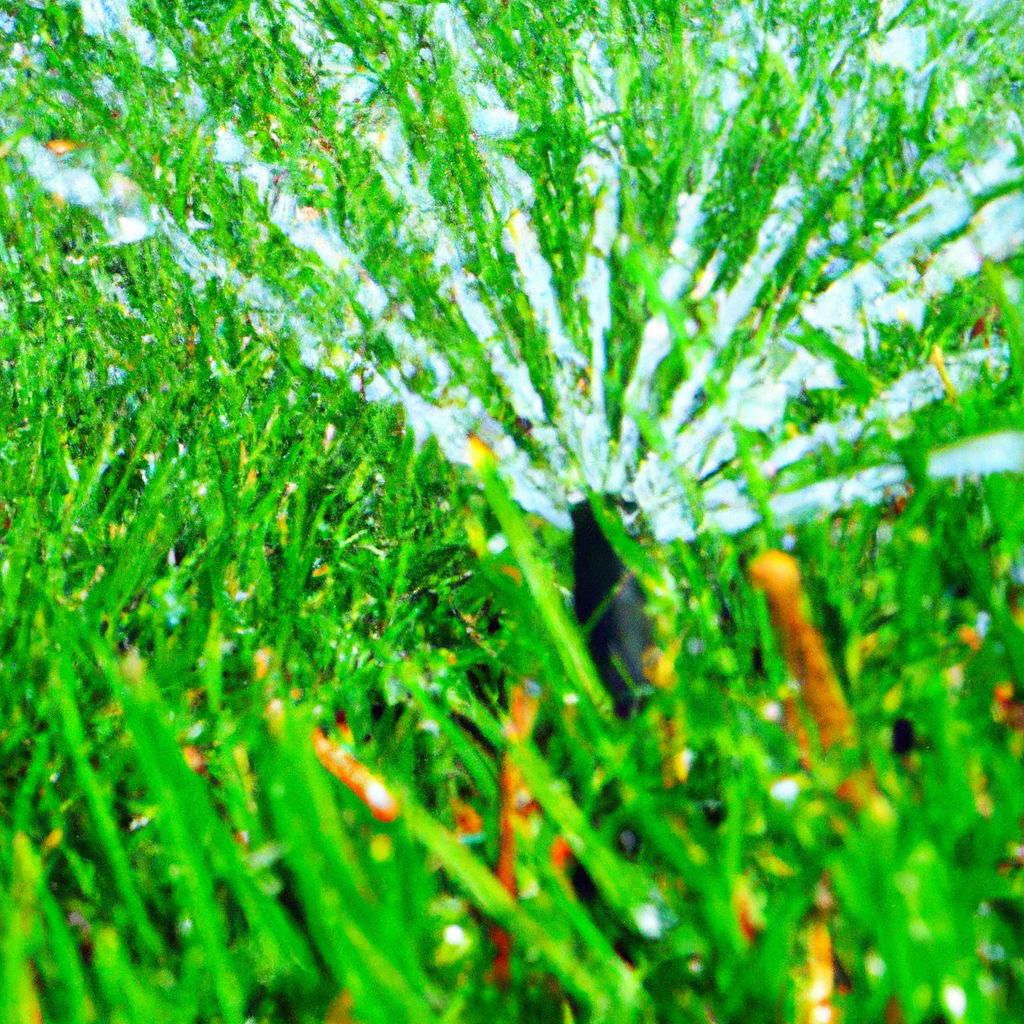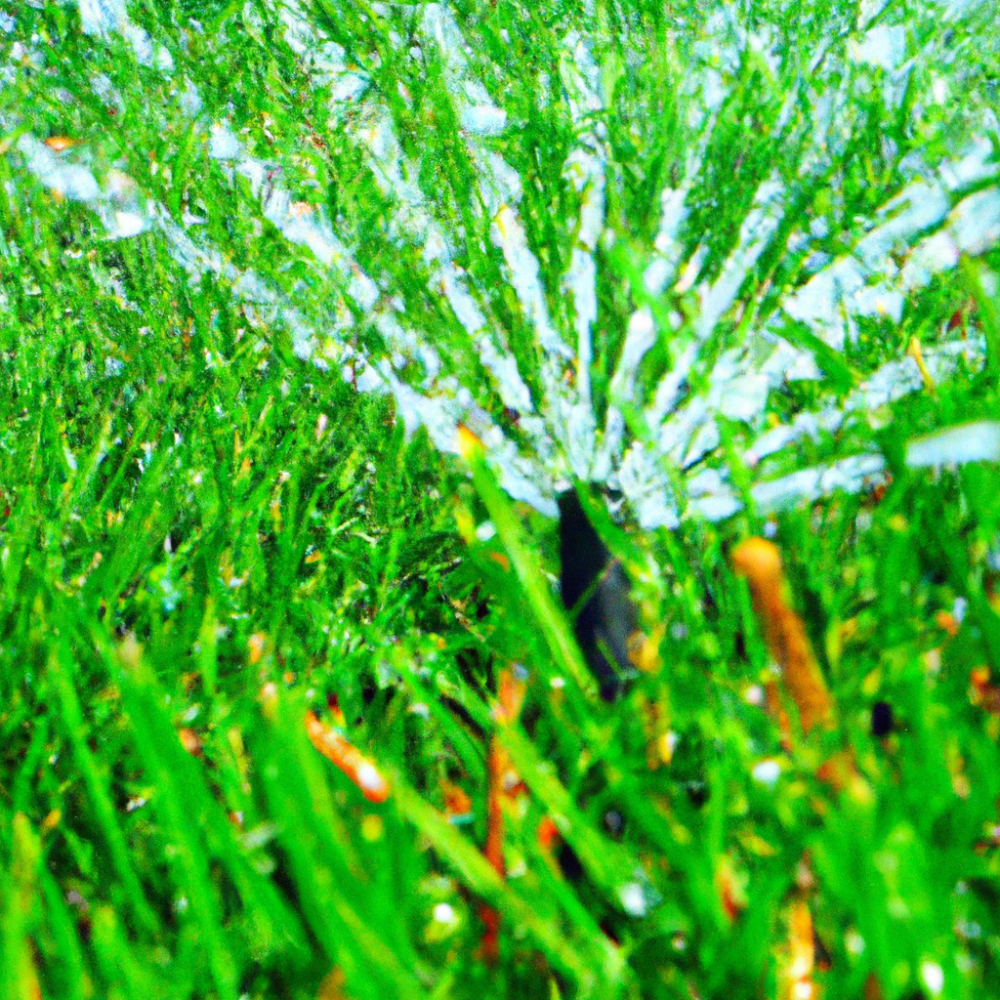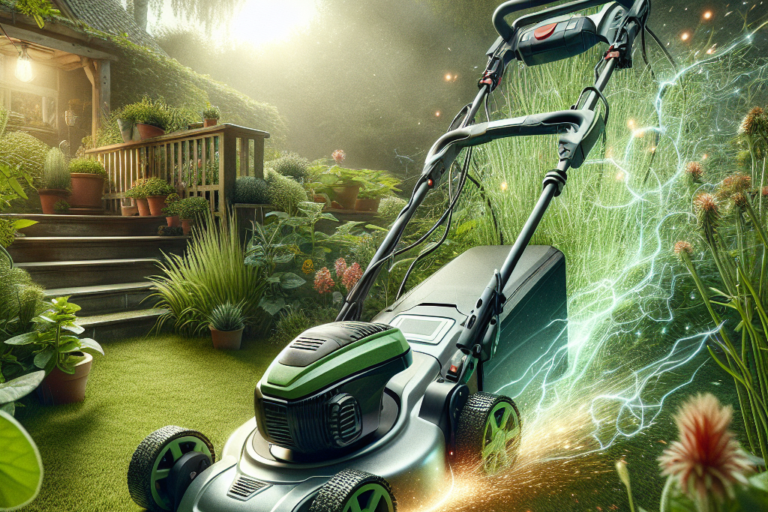You’ve invested time and effort into creating a beautiful lawn, but now it’s time to address one crucial aspect of its maintenance: irrigation. Properly watering your lawn is essential for its health and longevity, but figuring out the best method can be a bit overwhelming. Don’t worry, though, because we’ve got you covered. In this article, we’ll explore various strategies and techniques to ensure that your lawn receives the optimal amount of water, enabling it to thrive and stay lush green all year round. With our expert advice, you’ll never have to worry about under or over-watering your lawn again.
Understand Your Lawn’s Water Needs
Determine Your Lawn’s Type
First, you need to determine the type of lawn you have. Is it warm-season or cool-season grass? The water requirements for these types of grasses can be different, so understanding which category your lawn falls into is crucial. Warm-season grasses like Bermuda grass and Zoysia grass thrive in hot climates and require less water compared to cool-season grasses such as Kentucky bluegrass and perennial ryegrass.
Evaluate Local Climate and Soil Conditions
The next step in understanding your lawn’s water needs is to evaluate the local climate and soil conditions. Different regions have varying levels of rainfall and temperature patterns. Take note of the average monthly precipitation, along with the average daily temperature range during the growing season. Additionally, assess your soil’s drainage capacity. Sandy soils drain water quickly, while clay soils retain water longer. These factors will help you determine the amount of water your lawn needs and the frequency of watering.
Consider Seasonal Watering Demands
Seasonal changes can greatly affect your lawn’s watering requirements. During the hot summer months, when evaporation rates are high and rainfall is scarce, your lawn will need more water to stay healthy. On the other hand, during the cooler months or rainy seasons, your lawn may require less irrigation. Understanding the seasonal watering demands will help you adjust your watering schedule accordingly and avoid over or underwatering.
Choosing the Right Irrigation System
Sprinkler Systems
Sprinkler systems are one of the most commonly used irrigation systems for lawns. They distribute water in a spray pattern over a designated area, mimicking rainfall. There are various types of sprinkler systems to choose from, such as oscillating sprinklers, impact sprinklers, and gear-driven rotors. Consider factors like your lawn size, shape, and water pressure when selecting a sprinkler system. It’s also important to position the sprinkler heads correctly to ensure adequate coverage and avoid overspray.
Drip Irrigation Systems
Drip irrigation systems are another popular option for efficient lawn watering. These systems deliver water directly to the plant roots through a network of tubing and emitters. Drip irrigation systems minimize water wastage as they deliver water slowly and directly to the plants’ root zones, where it is needed the most. They are particularly useful for gardens with shrubs, flowerbeds, and vegetable patches that require precise and targeted watering.
Rotary Nozzle Systems
Rotary nozzle systems combine the best features of both sprinkler and drip irrigation systems. They have adjustable nozzles that rotate, delivering water in a gentle, rain-like pattern. The rotating action minimizes water runoff and ensures uniform coverage. Rotary nozzle systems are suitable for medium to large lawns and are known for their water efficiency, making them a sustainable choice for irrigation.

Calculating Water Requirements
Determine Daily Watering Needs
To determine your lawn’s daily watering needs, you need to consider factors such as grass type, weather conditions, and soil moisture levels. Warm-season grasses typically require about 1 inch of water per week, while cool-season grasses may need up to 1.5 inches. Divide this weekly water requirement by the number of days you plan on watering to get the daily watering needs. However, keep in mind that actual water requirements may vary based on the specific conditions of your lawn.
Calculate Run Time
Once you know your lawn’s daily watering needs, you can calculate the run time for your irrigation system. This is the amount of time needed to provide your lawn with the required amount of water. To calculate the run time, divide the daily watering needs by the irrigation system’s application rate. The application rate is the amount of water emitted by the system per hour. For example, if your lawn needs 1 inch of water and your sprinkler system has an application rate of 0.5 inches per hour, you would need to run the system for 2 hours to meet the watering needs.
Consider Watering Frequency
Watering frequency depends on multiple factors, including soil type and weather conditions. It’s generally recommended to water deeply and infrequently rather than shallowly and frequently. This encourages deep root growth and helps the grass become more resilient to drought conditions. However, if you have sandy soil or live in a particularly hot and dry climate, you may need to water more frequently. Monitor your lawn’s moisture levels and adjust the watering frequency accordingly to prevent over or underwatering.
Placement and Coverage
Positioning Sprinkler Heads
Proper placement of sprinkler heads is crucial for ensuring even coverage and avoiding areas of over or underwatering. Sprinkler heads should be positioned so that their spray patterns overlap. This helps eliminate dry spots and ensures that each area of your lawn receives an adequate amount of water. Additionally, consider the distance between sprinkler heads and adjust them according to the flow rate of your irrigation system. Following manufacturer guidelines will help you achieve optimal coverage.
Ensuring Overlap and Uniformity
Along with proper sprinkler head placement, it’s important to ensure overlap and uniformity in the water distribution. Overlap means that the spray patterns from adjacent sprinkler heads intersect, resulting in consistent coverage. To achieve overlap, you may need to adjust the spray pattern or spacing of your sprinkler heads. By ensuring uniformity, you prevent some areas receiving excessive water while others remain dry. Regularly inspect your sprinkler system for any clogs or malfunctions that could affect the uniformity of water distribution.
Avoiding Overspray and Waste
To prevent overspray and water waste, make sure your sprinkler system is properly adjusted. Check for any misaligned or clogged sprinkler heads that may be spraying water onto non-target areas like sidewalks, driveways, or fences. Adjust the nozzle patterns to avoid watering hardscape or areas where plants don’t need water. If you have slopes in your lawn, adjust the run time or use low-angle nozzles to prevent runoff. Using timer controls and smart irrigation technologies can also help minimize water waste and ensure efficient watering practices.

Managing Watering Schedule
Establishing a Schedule
Establishing a regular watering schedule is essential for maintaining a healthy lawn. Watering in the early morning is generally recommended as it allows the grass blades to dry before evening, reducing the risk of disease. Aim to water between 4 am and 10 am when evaporation rates are lowest, and wind speeds are calm. However, be aware of any local watering restrictions or guidelines that may be in place. Customize your watering schedule based on your lawn’s specific needs and the information gathered on your lawn’s water requirements.
Adjusting for Seasonal Changes
Seasonal changes can significantly impact your lawn’s watering needs. As the weather gets hotter and drier, you may need to increase the frequency and duration of watering sessions. Conversely, during cooler and wetter seasons, you may need to reduce watering frequency to prevent overwatering. Keep a close eye on weather forecasts and adjust your watering schedule accordingly to ensure your lawn receives the right amount of water at the right time.
Monitoring and Testing
Regular monitoring and testing of your lawn’s moisture levels are essential for effective watering management. Use a soil moisture meter or perform a simple touch test to check the moisture content in the root zone. Avoid overwatering by making sure the soil is moist but not saturated. If your lawn shows signs of stress, such as wilted or discolored grass, adjust your watering schedule or increase the run time. By staying vigilant and responsive to your lawn’s needs, you can ensure optimal watering practices.
Watering Techniques and Strategies
Watering Deeply and Infrequently
Watering deeply and infrequently promotes healthy root growth and drought tolerance in your lawn. Instead of frequent light watering, which encourages shallow root development, aim to provide a deep soaking. This encourages the roots to grow deeper into the soil, reaching for water sources deeper down. When you water deeply, the water penetrates the soil, saturating the root zone and ensuring the grass has access to water even during hot and dry periods.
Avoiding Midday Watering
Avoid watering your lawn during the heat of the day, particularly during midday when temperatures are at their peak. Watering during this time is less efficient as the water can evaporate quickly due to high temperatures and strong sunlight. It also increases the risk of leaf scorching and fungal diseases. Instead, opt to water in the early morning or late afternoon when temperatures are cooler, and evaporation rates are lower. This allows the grass to absorb the water effectively and minimizes water loss due to evaporation.
Using Smart Irrigation Controllers
Smart irrigation controllers utilize advanced technology to optimize watering practices. These controllers gather data on local weather conditions, such as temperature and rainfall, and adjust the watering schedule accordingly. They can also adjust watering durations based on soil moisture levels, ensuring your lawn receives the right amount of water without waste. By using smart irrigation controllers, you can save water, reduce costs, and have peace of mind knowing your lawn is being efficiently watered.

Water Conservation Practices
Implementing Rainwater Harvesting
A great way to conserve water and reduce reliance on traditional irrigation sources is by implementing rainwater harvesting systems. These systems collect and store rainwater from rooftops or other paved surfaces and use it for watering purposes. Rain barrels or larger rainwater tanks can be installed to capture and store rainwater during wet seasons. This harvested water can then be used during drier periods to supplement your irrigation needs, reducing strain on municipal water supplies and conserving water resources.
Mulching to Retain Moisture
Mulching is a water-saving practice that helps retain moisture in the soil and reduces evaporation. Apply a layer of organic mulch, such as wood chips or straw, around your plants and over the exposed soil. Mulch acts as a protective barrier, preventing water from evaporating quickly and insulating the soil, keeping it cooler during hot weather. It also helps suppress weed growth, which competes with your lawn for water and nutrients. By incorporating mulch into your landscape, you can conserve water and promote healthy soil conditions.
Minimizing Evaporation
Reducing evaporation can significantly contribute to water conservation efforts. To minimize evaporation, consider using low-angle sprinkler heads that deliver water close to the ground, reducing the exposure to wind and heat. Watering in the early morning or late afternoon, when temperatures and wind speeds are lower, also reduces evaporation rates. Additionally, avoid watering on windy days as the wind can carry water away from your lawn. By implementing these practices, you can maximize the effectiveness of your irrigation system and conserve water in the process.
Common Mistakes to Avoid
Overwatering
Overwatering is one of the most common mistakes people make when it comes to lawn irrigation. It can lead to shallow root growth, fungal diseases, and wasted water. Avoid overwatering by monitoring your lawn’s moisture levels, adjusting your watering schedule based on weather conditions, and practicing deep, infrequent watering. Remember that it’s better to slightly underwater than to overwater, as most grasses can tolerate temporary drought conditions.
Underwatering
While overwatering is a common mistake, underwatering can also be detrimental to your lawn’s health. Insufficient water can lead to stressed and weakened grass, making it more susceptible to pests, diseases, and weed infestation. Signs of underwatering include wilted, discolored, or slow-growing grass. Adjust your watering schedule to ensure your lawn receives enough water to meet its needs without excessive runoff.
Improper Sprinkler Adjustment
Improper sprinkler adjustment can result in uneven watering patterns and wasted water. Pay attention to the position and angle of your sprinkler heads to ensure proper coverage. Regularly inspect and clean the sprinkler heads to remove any debris or blockages. Adjust the spray patterns and flow rates as necessary to achieve uniform distribution. By maintaining and adjusting your sprinkler system properly, you can avoid water waste and promote healthy growth in your lawn.

Maintenance and Troubleshooting
Inspecting and Cleaning Sprinkler Heads
Regular inspection and cleaning of sprinkler heads are essential for maintaining effective irrigation. Inspect the sprinkler heads for any damage, misalignment, or clogs that may hinder proper water distribution. Clean the nozzles to remove any dirt or debris that could affect their performance. If you notice any issues, replace or adjust the sprinkler heads accordingly. Regular maintenance will ensure your sprinkler system functions optimally and provides efficient watering for your lawn.
Repairing Leaks and Malfunctions
Addressing leaks and malfunctions promptly is crucial for efficient irrigation. Check for any leaks in the irrigation system, including pipes, valves, and connections. Repair any leaks or drips to prevent water waste. Additionally, monitor the system for malfunctions, such as inconsistent spray patterns or low water pressure. Troubleshoot and fix any issues to ensure your lawn receives adequate water coverage without wasting resources.
Adjusting for Plant Growth
As your plants grow, it’s important to adjust your irrigation system accordingly. Regularly assess the height and density of the foliage to ensure appropriate water coverage. Trim back shrubs or trees that may be blocking the sprinkler heads’ spray patterns. Make necessary adjustments to the height or angle of the sprinkler heads to accommodate plant growth and maintain uniform water distribution. By keeping up with the changing landscape, you can ensure your irrigation system continues to meet your lawn’s water needs.
Professional Help and Consultation
Consulting an Irrigation Specialist
If you’re unsure about your lawn’s specific water requirements or need help selecting and installing an irrigation system, consider consulting an irrigation specialist. These professionals have the expertise to assess your lawn’s needs, recommend the most suitable irrigation system, and provide guidance on proper watering techniques. They can also analyze the efficiency of your current system and suggest improvements to enhance water conservation and reduce water usage.
Hiring a Professional Landscaper
Professional landscapers can provide comprehensive lawn care services, including irrigation system installation, maintenance, and repairs. They have the knowledge and experience to design and implement irrigation solutions that are tailored to your lawn’s specific needs and environmental conditions. Hiring a professional landscaper saves you time and effort, ensuring that your lawn receives the proper irrigation it requires for healthy growth.
Getting Expert Advice
Whether it’s through online research, books, or attending educational workshops, seeking expert advice can enhance your understanding of proper lawn irrigation. There are various resources available that provide valuable insights and guidance on topics related to watering techniques, water conservation practices, and troubleshooting common irrigation problems. By continuously learning and staying informed, you can make informed decisions about your lawn’s irrigation needs and maintain a lush and healthy landscape.
By following these guidelines, you can ensure proper irrigation for your lawn while conserving water and promoting a vibrant and thriving outdoor space. Understanding your lawn’s water needs, choosing the right irrigation system, calculating water requirements, and implementing proper watering techniques are essential steps towards maintaining a healthy and beautiful lawn. Regular maintenance, troubleshooting, and seeking professional help when needed will ensure the longevity and effectiveness of your irrigation system. With the right knowledge and practices, you can enjoy a well-hydrated, green lawn that enhances the beauty of your home.



